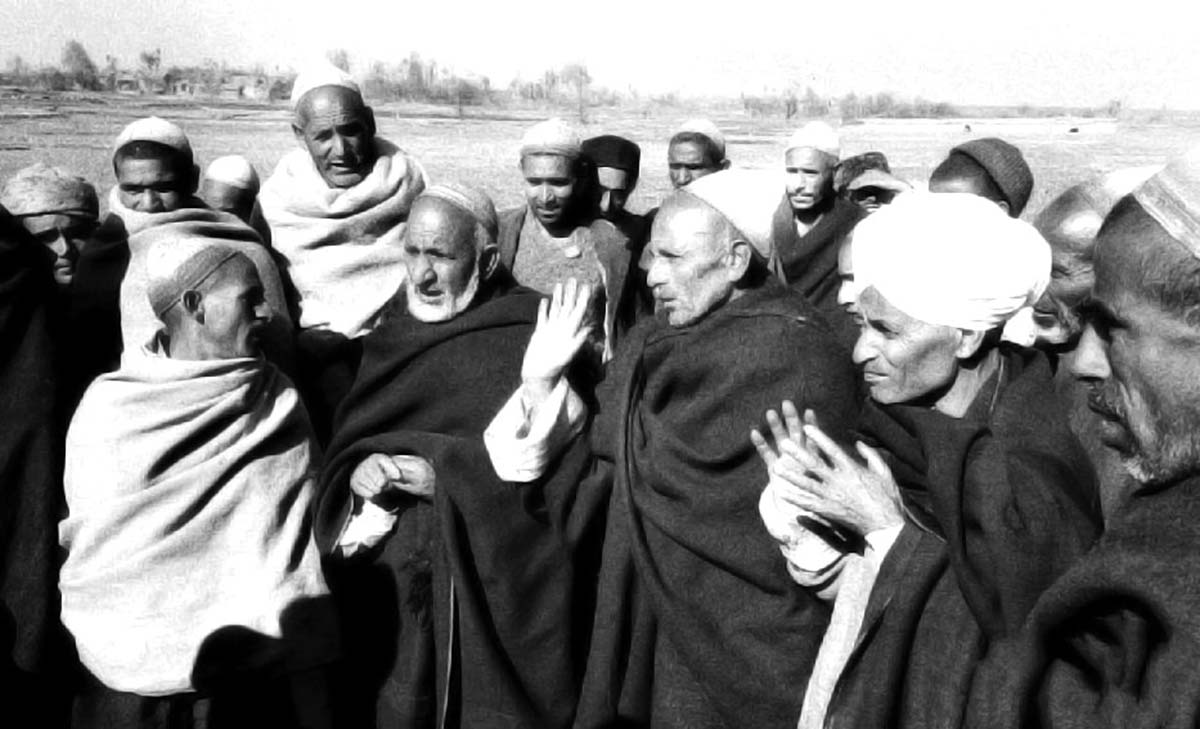by MJ Aslam
The Hato culture’s genesis accrues largely from Kashmir’s convoluted history. Kashmiri-labourers in plains in Jammu, part of Punjab and Shimla are being addressed as Huto, even now.

The conversation is something we always do with one another. It can be face-to-face, person-to-person, or in the digital computer age, an online interaction on the cell phone, WhatsApp, Messenger, Twitter, or audio or video chatting. It is “synchronous”, that is, happening at the same time. It is an “informal’ discussion or way of talking to each other.
Form[s] of address are both integral and constitutive of conversation and thus communication. Forms of address in conversations vary from community to community, culture to culture, region to region, or country to country. Within the same country or region, there will be different forms of address used by people in their day-to-day conversations with each other or others. These, in routine conversations in daily life, must be distinguished from rule-bound speeches, statements and addresses of the people in businesses and others. Change of socio-economic conditions, often, changes or modifies forms of address in conversations. But in some communities, due to simplicity or ignorance or illiteracy, it does not happen so.
In English, there is only one way of addressing each other in informal conversations which is the pronoun “you”. However, among Urdu or Hindi-speaking people of the subcontinent, there are three forms of address in a conversation. Three pronouns are used in place of the English “you” – Aap, Tum and Tu. The three words of conversational address are connected to relationship, status and power.

The first one, Aap is used to show respect to the addressee who may be elderly, a teacher, a superior, a boss, a preacher, or any other person of a higher socioeconomic status. Nowadays, with increasing impetus in schools and homes given to socio-religious mores of elementary formal and informal education, the form Aap is used by younger generations towards elders within their families, relations and localities as a mark of respect, though in some rural areas children still address them by using Tum. But, it does not mean a lack of respect towards the latter by any means of measurement. It actually arises from sheer love and intimacy, that the young people call their elders like Bapu, Pita Ji, Walid Sahab Tum Kaise Ho (Tr: Father/Dad, how are you?). Same words are used while addressing their mothers, uncles, aunts, siblings and grandparents.
However, the form Tu is generally taken as offensive in its use against such relations as mentioned above, and superiors and elders. This form finds its use in extremely intimate relations between spouses or between lovers or friends. It is also used while addressing a subordinate or a person of lower socioeconomic status in which situations it abounds with arrogance and pride on the part of the addresser.
Kashmiris, way back in the last decade of the nineteenth century recorded by Sir W R Lawrence, had three forms of address in conversation. While addressing a superior, they call them Hut-Haz, in their address of equal they call him, Hutsa and Ahansa and in addressing an inferior or a person of lower socio-economic rank, they call him Huta or Hato.
These three words in common parlance are to date in vogue among Kashmiris in their daily conversations. While addressing non-Muslims, especially Kashmiri-Bataas, the Muslims use the form of address differently such as Mahrah, who responds to the Muslim addresser by any of the three forms mentioned above depending on closeness with him or his socio-economic status.
But, many people might not be knowing that Mahrah is a short form of the term Maharaja coined during Dogra dynastic rule when Kashmiri Pandits as per caste classification, occupied all high and low positions in the monarchic officialdom despite constituting an insignificant ratio of the population of Kashmir.
The female of each Mahrah was invariably addressed by Muslims as Raze Baih which means consort of Mahrah or wife of Mahraj or queen.
The traditional Muslim greeting from Muslims to Kashmiri Pandits has been Adab Arz, comprising two words, Aadab and Arz. Aadab is an elegant Persio-Urdu way of addressing each other and Arz means “a petition, a plea”. Actually, in Dogra Era, Dogra Maharajas were addressed by the subjects whenever they had a petition in these words: Maharaj Arz Hay!”
A good number of Kashmiri Muslims unfortunately, most of the time, fail to notice that the three forms of address in conversations, mentioned above, do not bear nuances of insignificant importance and impression among those who know the difference between these terms. They may be using these forms of address with each other and others sincerely and simply but keeping in mind that three words contain a visible difference in their connotations when used in conversations.
The majority of Kashmiri Muslims under the influence of Islamic code of conduct which teaches and preaches Arash e azeem khut e gow khuliq e azeem bodh” (Tr: Best manners in talking stand at higher level than the Crown of God), properly address each other and others in their daily conversations. However, in some segments of the population, the discretion in the use of the forms of address is ignorantly, or innocently, not considered while addressing others.
It is chiefly because of age-old illiteracy and enforced poverty. It is also because of ignorance of the Islamic code of morals to be adopted by Muslims in their speech and conversation. Improper or inadequate guidance and training in schools and at home may be also responsible for the wrong use of the forms of address because it is rightly said that “parents are like mirrors to the children. The mirror should endeavour to give the best reflection”.
The Hato culture’s genesis accrues largely from Kashmir’s convoluted history. Kashmiri-labourers in plains in Jammu, part of Punjab and Shimla are being addressed as Huto, even now.
An Interesting Episode
In Jammu and Kashmir Bank there was an officer Mr P. He was a resident of Jogilangar Rainawari, Srinagar. Once in his service career, he was posted at Area Office Mumbai. Mr A was a young officer from Srinagar. His initial posting was also in Mumbai. He was posted in the Fort Mumbai branch. In connection with his official work, Mr A had to often visit the Area Office Mumbai which was at a distance of some kilometres from his branch. There at Area Office, he would often see and meet Mr P who apparently looked like a Kashmiri Pandit.
Mr P being senior officer and colleague was always respected and greeted by young man, Mr A. However, A always addressed him in these words: Aadaab Arz Marah, Sir! This is the usual way Kashmiri Muslims address and greets their Pandits colleagues. Mr P never objected to the way he was addressed and greeted by Mr A for several months whenever the two encountered each other at Area Office Mumbai.
Then, it so happened one day, Mr A saw Mr P was talking to some Kashmiris in his office room who was addressing him as Ahan’Aiz , Jinab, Hazrat, which is the familiar way Kashmiri Muslims address each other. Mr A who was watching the conversation between P and Kashmiris was quite astonished. He was naturally confused about the real identity of Mr P and intrigued to ask Mr P about his religious identity.
When Kashmiri friends left P’s room, A asked him: Sir Mihaiz Chu Akh Arz, Tohi Chiva Bateh Kineh Musalman? [Tr. Sir I have a curiosity. Will you please tell me , are you Muslim or Pandit ?] P smiling revealed his identity in these words: “Edh Henah Yi, Edh Henah Hu, Ed Henah Yoor, Edh Henah Hoor“. [Tr. My one half is Muslim, while my other half is non-Muslim].
(MJ Aslam is a published author and a columnist. Ideas are personal.)















